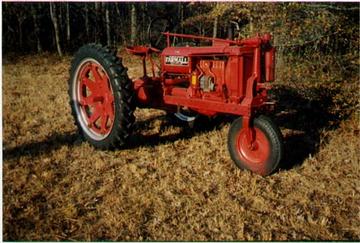14reamdalton
New User
Hello All,
I have a '36 Farmall F-12 that I rebuilt a few years back and I am constantly struggling with fuel issues. The tractor will start pretty easy but when running, sounds like it misses a cylinder every 2 or 3 revolutions. The exhaust is usially putting out a dark colored mist and after running for a while, the vent port in the exhaust manifold will start dripping black fluid that gets all over the left side of the engine. I have also notices that when running, it seems to be excessively louder than other F-12's in the area. It almost sounds like the engine is under a light load when at idle (which leads me to think it is a timing issue).
The tractor had sat for about 60 years before I got ahold of it. I had the magneto rebuilt, along with all new cap, rotor, wires, plugs. Rebuilt the original carb, correct valve lash, new piston rings. I even bought a new carb to put on thinking maybe the original was the issue, but so far, no luck. I have tried messing with the fuel mix screw, but that seems to do nothing. I have not touched the timing at all because it starts fairly easily.
Does anyone have any knowledge with these to know where I should start looking or continue looking?
Thank you all,
Dalton
I have a '36 Farmall F-12 that I rebuilt a few years back and I am constantly struggling with fuel issues. The tractor will start pretty easy but when running, sounds like it misses a cylinder every 2 or 3 revolutions. The exhaust is usially putting out a dark colored mist and after running for a while, the vent port in the exhaust manifold will start dripping black fluid that gets all over the left side of the engine. I have also notices that when running, it seems to be excessively louder than other F-12's in the area. It almost sounds like the engine is under a light load when at idle (which leads me to think it is a timing issue).
The tractor had sat for about 60 years before I got ahold of it. I had the magneto rebuilt, along with all new cap, rotor, wires, plugs. Rebuilt the original carb, correct valve lash, new piston rings. I even bought a new carb to put on thinking maybe the original was the issue, but so far, no luck. I have tried messing with the fuel mix screw, but that seems to do nothing. I have not touched the timing at all because it starts fairly easily.
Does anyone have any knowledge with these to know where I should start looking or continue looking?
Thank you all,
Dalton




